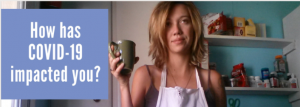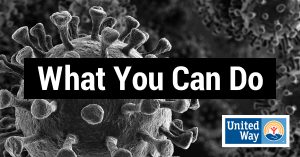
 COVID-19 Impact on NY Individuals and Families
COVID-19 Impact on NY Individuals and Families
NY COVID Impact Survey Highlights Final PDF
Statewide COVID-19 survey details the impact the COVID-19 pandemic has had on New Yorkers.
IMPORTANT NOTE: A copy of the survey results are available to review. Contact us at 518-608-6456, if you would like access.
A statewide survey on the effects of COVID-19 confirms that New Yorkers are facing many challenges due to the pandemic, some New York communities and populations are being hit disproportionately hard, and most New Yorkers are very worried about themselves or family members being infected with COVID-19 and experiencing mental health issues.
The survey revealed that:
- Most respondents expressed an overwhelming fear of catching COVID-19 (80.7%), followed by a concern with mental health issues (47.6%).
- Families are concerned about childcare/education and/or remote learning (31.6% of respondents listed this as a top concern); and 61.7% of respondents with children report challenges with juggling work and children’s needs.
- Hourly workers were far less likely to transition to remote work (32.6%) than salaried workers (63.3%).
- Of those looking for work, 54.4% reported difficulty finding a job and 46% reported being unable to find a job that provides a sufficient income.
ALICE® (Asset Limited, Income Constrained, Employed) Households were struggling to meet basic needs before the pandemic. Pre-pandemic research found that 45% of households in NYS fell below the ALICE Threshold, meaning they were unable to meet a basic household survival budget for housing, food, transportation, childcare, health care and technology. COVID-19 has disproportionately impacted these households.
ALICE households:
- Are statistically more concerned about childcare and education, mental and physical health issues, paying off debts, job loss, and affording food and housing than households above the ALICE Threshold.
- Are more likely to receive food from a food bank, borrow from friends/family and apply for government assistance than households above the ALICE Threshold.
By comparison, households above the ALICE Threshold are more likely to be concerned about a household member getting COVID-19 and less likely to say that they’ve had to take any additional actions (like applying for unemployment, selling belongings, taken money out of savings) to get by during the pandemic.
United Way of New York State, in partnership with local United Ways across the state, released the statewide survey to help shed light on the impact COVID-19 on New York communities. In addition, the survey aims to guide and inform United Ways across the state on how to best support New York families through long-term recovery and beyond.
“Understanding our communities is what United Way does best, however we always want to be sure we are listening, turning outward and capturing the voice of the community. This survey allowed for us to hear from people around the state to let us know how they’ve been affected, where they need the most assistance, what their biggest concerns are, and to tell us more about what communities in the state may be struggling more than others.” – Brenda Episcopo, United Way of New York State
The survey was administered from October 13- November 3, 2020 and made available in both English and Spanish. The survey closed with a total of 5,796 responses from across the state.
TheCOVID-19 survey has provided a snapshot of critical needs in the state of New York due to the coronavirus and United Way NYS hopes that the results will help guide conversations, community action, advocacy and policy ensuring resources are allocated to support those in need.
United Way NY COVID-19 NY Response
If you need assistance finding food, paying household bills, or other essential services, dial 2-1-1 to speak with someone who can help.
Further details about 211 in New York can be found here.
Find details about 211 across the US here.
For Recent Updates on COVID-19 Response by 211 NY and NY United Ways, click here.
When you feel the most helpless, you actually have the power to do the most good.
As we move into social distancing and self-quarantine, it’s natural to feel isolated. Staying away from other people, though necessary, doesn’t fulfill our need to take action, to do something in the face of this crisis.
Fortunately, even in isolation, you can help the most vulnerable among us. Because we are never truly alone in our human community.
Here are five things you can do to fight in the face of COVID-19:
- Donate to thelocal COVID-19 Funds listed below. Your gift supports community resources that serve struggling families in your community. Workers are losing wages and tips due to event cancellations and business closures. Kids who rely on free- and reduced-price breakfast and lunch at school risk going hungry. As food pantries and other community resources are inundated, donations to your local COVID-19 Fund help ensure these vital relief services stay open and accessible.
If your local United Way does not yet have a fund established, United Way Worldwide has created the COVID-19 Community Response and Recovery Fund. This Fund supports communities struggling in the wake of the new virus, by supporting local United Ways and 211, the go-to information resource in times of crisis
2. Direct people to 211. 211 is working on the front lines of the pandemicall across New York State and the United States. Expert 211 specialists provide real-time information on social services and other resources to those in need. If you know someone who is struggling, or just looking for a source of reliable information, tell them to dial 2-1-1. If you are outside of NYS, find your local 211 information here.
NOTE: You can dial 211 to speak to someone about local assistance at any time. The 1-866-211-9966 number you may have seen on social media is only available for residents of Indianapolis. Please be aware that financial assistance related to COVID-19 is not available for individuals everywhere
3. Spare something for the food pantries. As stores run out of bulk food and toilet paper, food pantries are struggling to fill their shelves, even as more people are coming in for help. Consider donating what you can spare, especially non-perishable food and toiletry items. To find out what our local food pantries need most and where to drop off donations, dial 211 or contact your local United Way. You can find your local United Way information here.
4. Call your friends and family. Loneliness is as damaging as smoking 15 cigarettes a day. Even during isolation, modern technology allows us to stay connected. Checking in on friends and family is more than polite right now, it’s essential. And don’t forget elderly neighbors or others living alone.
5. Take care of your mental health. If you’re stuck at home, keep busy with hobbies, try out arts and crafts, pick up an old musical instrument, organize family game nights, and step outside for fresh air and exercise. You can’t take care of others unless you take care of yourself.
Even in these uncertain times, no one is powerless to make a difference. Small acts, taken together across the country, can change the course of the pandemic, bolster those facing economic challenges, and protect the most vulnerable.
The COVID-19 situation is evolving rapidly, as more information becomes available. Please check the CDC’s website for updated information related to the virus. For up to date information from New York State Governor Cuomo, click here.
Your local United Way information can be found here.
New York Local United Way COVID-19 Response Funds and Efforts:
United Way of the Adirondack Region, Inc.
United Way of Broome County Managing 211 Susquehanna River Region, COVID-19 Fund, recruiting COVID Response Volunteers
United Way of Buffalo and Erie County WNY Responds
United Way of the Greater Capital Region COVID-19 Fund
United Way of Catteragus County COVID-19 Relief Fund
United Way of Cayuga County COVID-19 Fund and collaborative Response Fund
United Way of Central New York COVID-19 Community Support Fund
United Way of Southern Chautauqua County Coordinating volunteers and local information
Chenango United WayCOVID-19 Response Fund
United Way for Cortland County COVID-19 Response Fund
United Way of Delaware & Otsego Counties coordinating volunteers
United Way of Dutchess-Orange Region
United Way of Long Island United Together, A Response to COVID-19
United Way of Northern New York Crisis Fund
Oswego United Way Oswego County COVID Fund
United Way of Greater Rochester Community Crisis Fund
Includes Designation Options for: United Way of Livingston County, United Way Ontario County, United Way of Genesee County, United Way of Wyoming County, United Way of Wayne County
United Way of RocklandRockland Coronavirus Crisis Fund
United Way of Sidney COVID-19 Fund
United Way of Tompkins County COVID-19 Relief Effort
Tri-County United Way COVID-19 Fund
United Way of Ulster County Project Resilience Fund
United Way of the Valley and Greater Utica Area Mohawk Valley COVID-19 Response Fund
United Way of Westchester and PutnamThe John M. Bendheim Community Disaster Response Fund










